Mercuric chloride
This chemical standard operating procedure (SOP) and the associated Safety Data Sheet (SDS) are for our safety. Read and understand both documents. If this is a paper copy, check for updated versions on the IsoLab website.
Process
We use concentrated mercury chloride solution to preserve water samples for DIC concentration and N2 stable isotope composition analyses.
Hazards - SDS
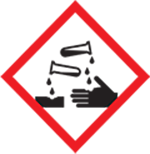
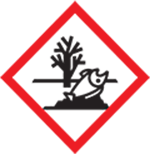
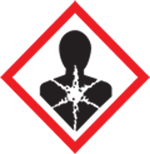
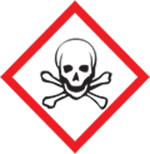
Fatal if swallowed. Causes severe skin burns and eye damage. Suspected of causing genetic defects. Suspected of damaging fertility or the unborn child. Causes damage to organs through prolonged or repeated exposure. Very toxic to aquatic life with long lasting effects.
Protection - SDS
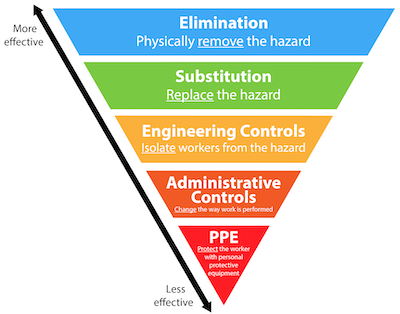
Engineering Controls
Work under hood. Do not inhale substance/mixture. Ensure the fume hood has proper air flow by checking the flow rate on the control panel and / or using a smoke match or wipe to visualize flow.
PHS - Use in any fume hood in the 302 / 303 suite.
Administrative Controls
Make others working close-by in the lab aware that you are working with mercuric chloride.
PHS - Label the hood and any container with "mercuric chloride".
Personal Protective Equipment (PPE)
Users must wear long pants or similar, closed-toe shoes, laboratory coat, eye protection, and long nitrile gloves.
PHS - Eye protection should be tightly fitting goggles. Nitrile gloves should have a minimum layer thickness of 0.11 mm.
Handling - SDS
Use PPE, especially goggles and Nitrile gloves, whenever using mercury chloride. Avoid contact with skin, eyes and clothing; Avoid inhaling gases, fumes, dust, mist, vapor, and aerosols. Exclusively prepare mercury chloride solutions under the fume hood. Do not handle when pregnant! Keep container tightly closed when not in use. Risk of explosion with: Fluorine, Alkali metals, hydrazine and derivatives. Exothermic reaction with: Strong bases, Strong oxidizing agents. Incompatible materials: Lead, Copper, Light metals, silver, Zinc, Tin.
PHS - Decontamination - Immediately change contaminated clothing. Apply preventive skin protection. Wash hands and face after working with substance. Thoroughly clean any equipment that has come in contact with it afterwards.
Storage - SDS
Use MyChem, the UW EH&S chemical inventory database, to find exactly where in the lab suite this chemical is stored. In general, keep container tightly closed, in a dry well-ventilated place.
Spills - SDS
Get the closest spill kit. Avoid generation and inhalation of dusts in all circumstances. Avoid substance contact. Ensure adequate ventilation. Evacuate the danger area. Do not let product enter drains. If you intend to clean up the spill yourself, don a respirator with dust cartridges and non-vented protective goggles along with all other PPE described above before attempting clean-up. Do not let anyone enter the contaminated space until the air is cleared or proper PPE has been donned.
PHS - Exposure:
- Inhalation - Move to fresh air. For advice, call UW Employee Health Center (206.685.1026) or the Washington Poison Center (800.222.1222). For emergency help, call 911.
- Skin contact - Take off immediately all contaminated clothing. Rinse skin with water/ shower. For advice, call UW Employee Health Center (206.685.1026) or the Washington Poison Center (800.222.1222). For emergency help, call 911.
- Eye contact - Rinse out with plenty of water. Immediately call an ophthalmologist. Remove contact lenses. For advice, call UW Employee Health Center (206.685.1026) or the Washington Poison Center (800.222.1222). For emergency help, call 911.
If the spill is small and contained in a fume hood, gather appropriate materials (e.g. paper towels and a waste container) and get yourself ready to clean it up.
If you need assistance or advice, use the IsoLab Emergency Contacts sheet.
Consult the EH&S Spill Poster and Exposure Poster
Waste - SDS
If you are cleaning up after a spill and have a bag of debris, ensure the bag is sealed and use multiple bags as needed. Complete an EH&S Hazardous Waste Label and adhere it to the bag. Here are instructions for how to label chemical waste containers. Labels are located in a drawer on the west wall of 303B near the door to the hallway.
Put all waste, solid or liquid, into a plastic container. Options for waste containers can be found under the west sink in 303B. Complete an EH&S Hazardous Waste Label and adhere it to the bottle. Here are instructions for how to label chemical waste containers. Labels are located in a drawer on the west wall of 303B near the door to the hallway.
If the waste is to be picked up by EH&S include - Place the properly labeled container in one of the gray tubs near the hallway door of 303B. Segregate from other waste containers as appropriate.
Consult our generalized Chemical Waste Disposal SOP.

Training - PHS
Mercuric chloride is deemed a particularly hazardous substance - PHS by EH&S and you need approval before using it. Complete the list of requirements below before using this chemical.
Prerequisites
- You must have completed Managing Laboratory Chemicals in the last three years. Login to check.
- Read and understand the SDS for mercuric chloride.
- Read, understand, and digitally sign this SOP.
- Contact your Principal Investigator (PI) AND the Chemical Hygiene Officer (CHO) indicating that you have completed all prerequisites and await approval.
